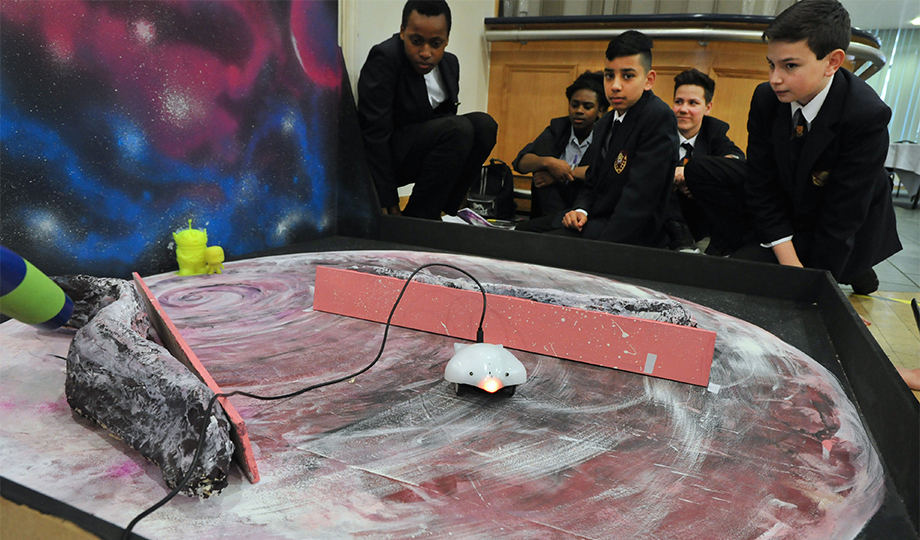Tiny robots programmed by school pupils from the UK, Nigeria and Romania are competing at Brunel University London on Tuesday 28 March to earn their owners the title of Adoptabot 2017 champions.
The Adoptabot initiative launched at Brunel in 2014, shortly before coding, or programming, was added to England’s school curriculum, as a means of teaching 14-17 year old pupils the skill in a fun and engaging way.
Recent research by one of Adoptabot’s founders, Dr Stasha Lauria, has explored the best ways to teach programming to beginners, including using Python over Java, and teaching problem solving before programming. Research at Brunel suggests that there is some evidence that the use of personal robots in an appropriate context can help inspire students to achieve this.
Dr Lauria explains further: “Young people have grown up in a digital world where technologies are so advanced, things like Virtual Reality are familiar, and much of life revolves around being online.
“But it turns out that using the most simple little physical robot ‘bird’ to teach programming has been really effective - there’s nothing like the frustration of seeing the robot repeatedly banging itself into a wall to get the students motivated to write better code and get it under control. The competition rivalry aspect really helps as well.”
Adoptabot is built around the Finch, developed by Carnegie Mellon University. Finches have a ‘beak’ that can change colour, an accelerometer, IR sensors to detect obstacles, a light sensor, a thermocouple to determine temperature and a buzzer and speaker so they can talk.
Pupils can see the immediate physical effects of their coding, which is a great confidence boost when they may have had no prior coding knowledge just a short time earlier.

Previous Adoptabot teams have programmed finches to act as ‘babysitters’, repair crew on space craft working in a vacuum, nuclear power station engineers, and as night watchmen able to raise the alarm in burglaries and to spot the earliest sign of fire.
Teams are expected to develop a story or scenario explaining what they want their robot to do. They produce design documents, write code, create Wiki pages about their projects and ‘pitch’ their project at the Brunel event. This variety of tasks, from the more technical to the creative, helps give individuals with different preferences and skills the chance to take part.
While each team is given a robot to work on by Brunel, the pupils are also expected to create low-cost ‘sets’ from craft materials.
There are 11 teams from eight schools involved in this year’s competition: Debiruss College (Nigeria), "Nicolae Balcescu" Cluj-Napoca (Romania) and the UK’s St Augustine’s High, LVS Ascot, Bishopshalt School, Ruislip High School, Uxbridge High School, and Weydon School.
Overseas teams who cannot make it to the Brunel campus compete via Skype.
Adoptabot is just one of the many ways Brunel is working to engage 14-17 year olds with introductory programming.
Dr Lauria is also involved in weekly Saturday classes on robotics, VR, AI and more in collaboration with other members of the Department of Computer Science, and holds STEM events in collaboration with the University’s Widening Participation team and student ambassadors, where beginners are challenged to program a robot in just an hour.
Reported by:
Sarah Cox - Senior Media Relations Officer,
Media Relations
sarah.cox@brunel.ac.uk